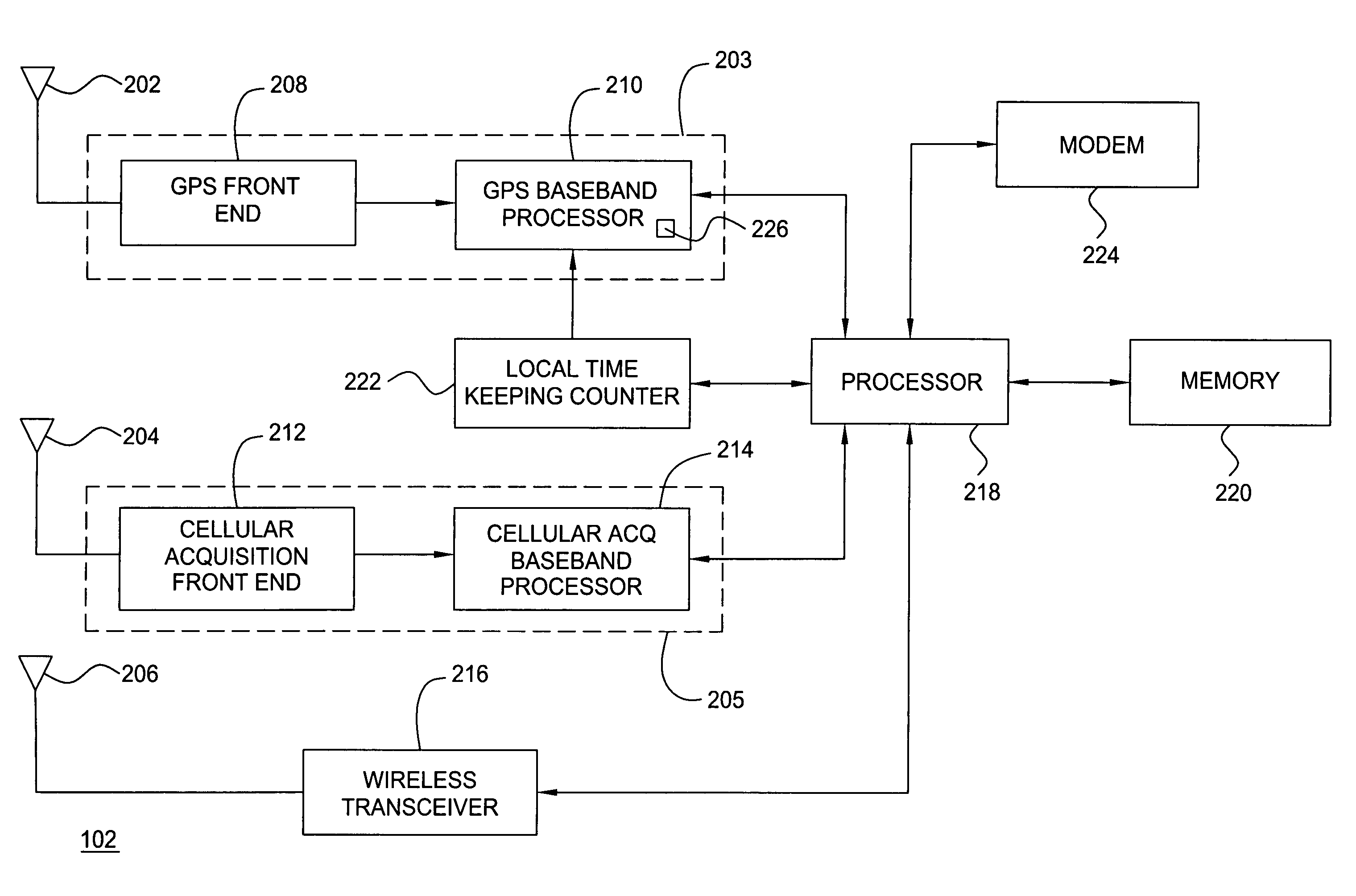Method and apparatus for processing a satellite positioning system signal using a cellular acquisition signal
a global positioning system and cellular acquisition technology, applied in satellite radio beaconing, measurement devices, instruments, etc., can solve the problems of large position errors, similar sized errors in the position of gps receivers, and large range errors of up to 0.8 m, so as to achieve less complex and less costly
- Summary
- Abstract
- Description
- Claims
- Application Information
AI Technical Summary
Benefits of technology
Problems solved by technology
Method used
Image
Examples
Embodiment Construction
[0020]A method and apparatus for processing satellite positioning system signals is described. Those skilled in the art will appreciate that the invention may be used with various types of mobile or wireless devices that are “location-enabled,” such as cellular telephones, pagers, laptop computers, personal digital assistants (PDAs), and like type wireless devices known in the art. Generally, a location-enabled mobile device is facilitated by including in the device the capability of processing satellite positioning system (SPS) satellite signals, such as Global Positioning System (GPS) signals.
[0021]FIG. 1 is a block diagram depicting an exemplary embodiment of a position location system 100. The system 100 comprises a mobile receiver 102 in communication with a server 104 via a wireless communication network 106 (e.g., a cellular telephone network). The server 104 may be disposed in a serving mobile location center (SMLC) of the wireless communication network 106. The mobile recei...
PUM
 Login to view more
Login to view more Abstract
Description
Claims
Application Information
 Login to view more
Login to view more - R&D Engineer
- R&D Manager
- IP Professional
- Industry Leading Data Capabilities
- Powerful AI technology
- Patent DNA Extraction
Browse by: Latest US Patents, China's latest patents, Technical Efficacy Thesaurus, Application Domain, Technology Topic.
© 2024 PatSnap. All rights reserved.Legal|Privacy policy|Modern Slavery Act Transparency Statement|Sitemap



